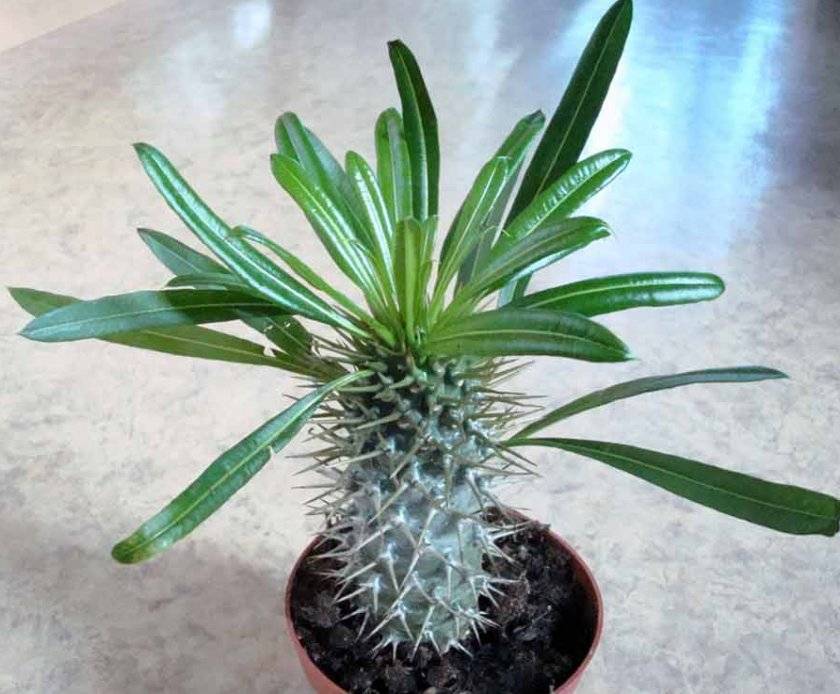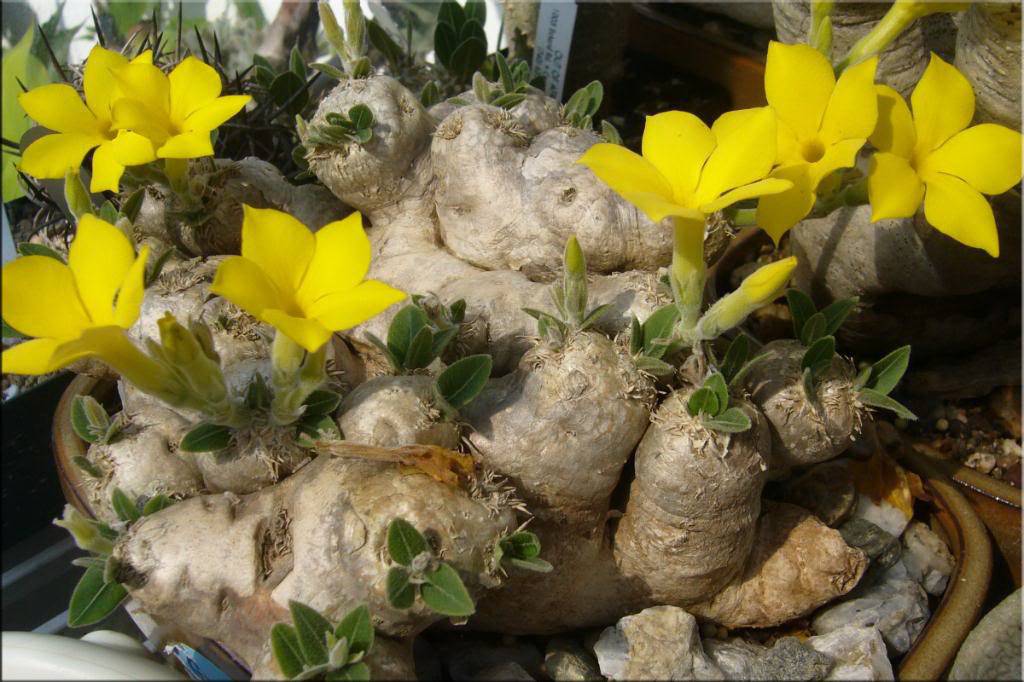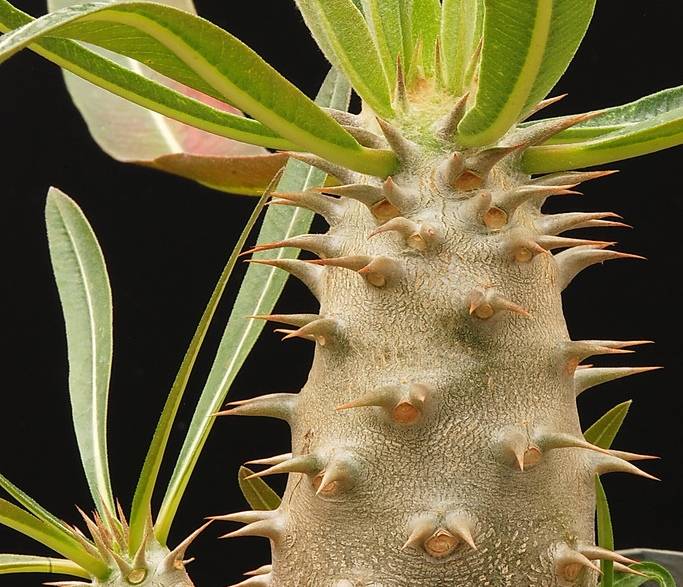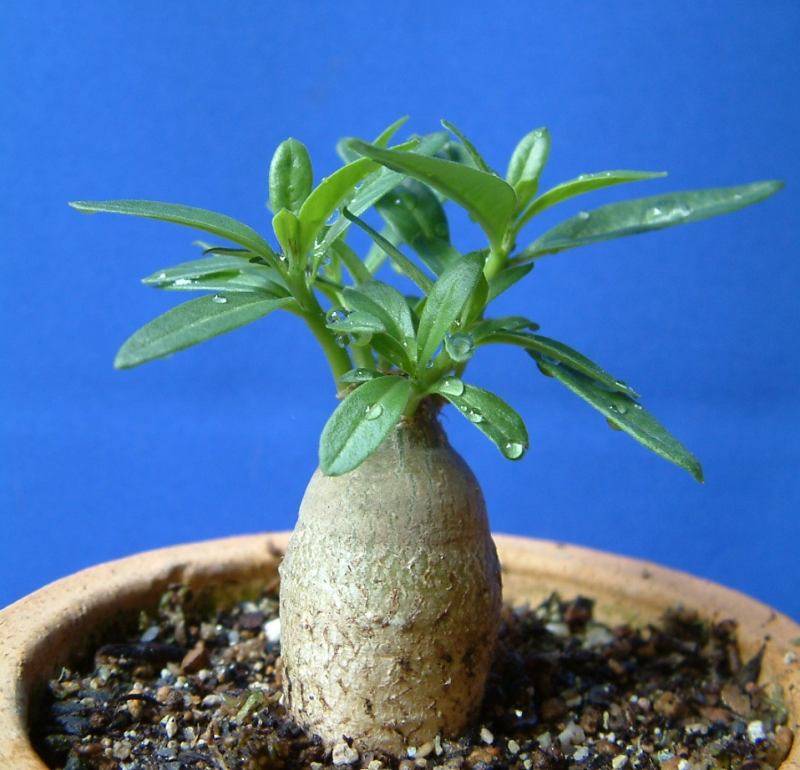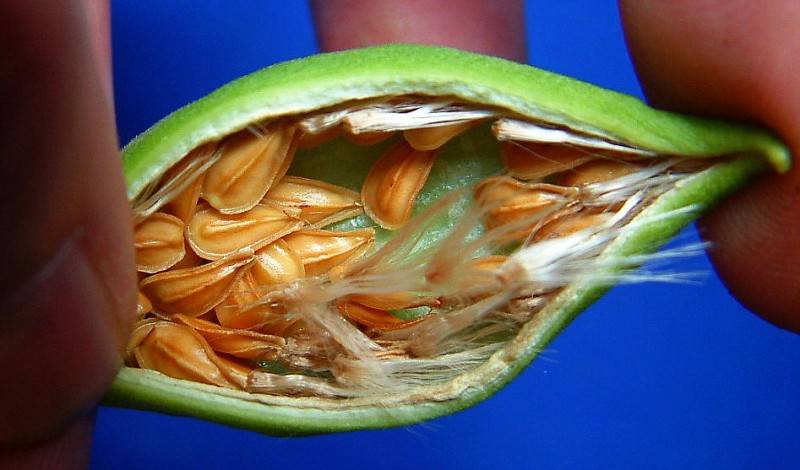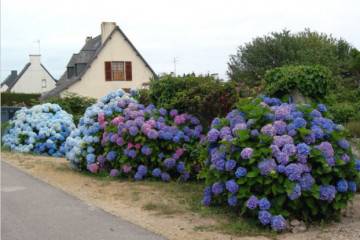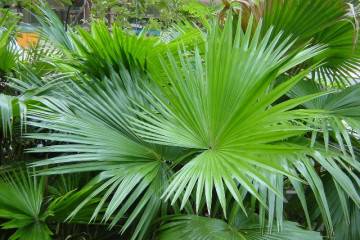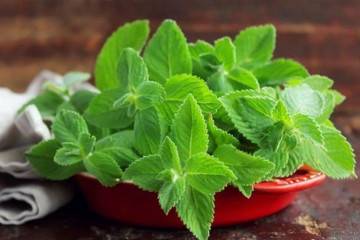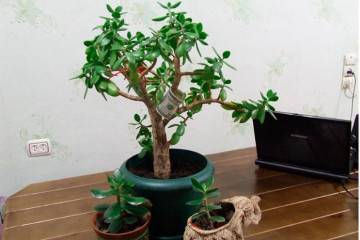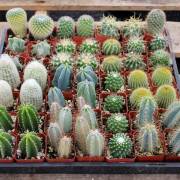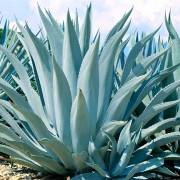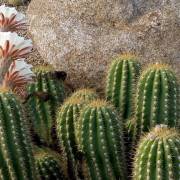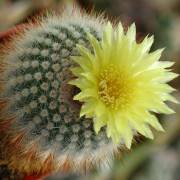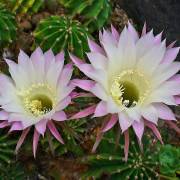Pachypodium Lamera - how to plant a Madagascar palm tree
Content:
The pachypodium lamera is the most common species of the pachypodiums genus. We are talking not only about domesticated species intended for home cultivation, but about wild-growing individuals. The birthplace of the plant is about. Madagascar, whence another name for the lamer pachypodium originated - Madagascar palm.
Pachypodium - what is this flower, what does a cactus look like
The pachypodium flower does bear some resemblance to the palm tree, thanks to its leaves located at the top of the thick trunk. However, these plants have no family ties. It belongs to the Kutrovy family, which means that it is not a palm tree, but the Pachypodium cactus.
Brief description and characteristics
The difference between the pachypodium and other succulents is its powerful, thick trunk. There are 3 groups of plants, depending on the type of stems:
- Dwarf - the trunk is short and thick. The height of the trunk is most often equal to its width or even inferior to it, not exceeding 10 cm.
- Shrubs. Their trunk in nature reaches 4 m. The width is less, they are similar in shape to a bottle.
- Cactus-like trees. Long, vigorous plants, in nature can grow up to 8 m, at home, as a rule, do not exceed 1.5 m. The shape of the trunk is similar to a cigar. Branching is possible.
Toxicity of the pachypodium
The stem of the pachypodium is poisonous. It contains juice, which, when it gets on the skin and mucous membranes, causes allergic reactions, redness and skin irritation.
In order to prevent this, immediately after accidental contact with plant sap, you need to thoroughly rinse the affected area with a stream of cold running water.
Variety of pachypodium species
A total of 25 plant species are distinguished. But only a few of them are grown indoors.
These succulents vary greatly in appearance, but they are united by a fleshy, thick trunk, which accumulates water and nutrients, thanks to which the plant can endure quite difficult times.
Therefore, one of the advantages of growing any pachypodium flower is that caring for it at home is very simple. Like other cacti, it is absolutely unpretentious. It remains only to choose the variety that suits your liking more and fits better into the interior.
Pachypodium lamerei or Madagascar palm
Pachypodium lamerei is the most common type of succulent.
In its natural environment, it reaches a colossal height for its family - 8 m. Its powerful trunk is covered with thorns, can lignify and sometimes branch. At the crown there is a rosette of long, lanceolate, dark green leaves. Their length ranges from 10 to 30 cm, width up to 9 cm (at home, the dimensions are much more modest). The flowers are beige, may have a pinkish tint.
Pachypodium geayi
This variety is outwardly almost identical to Pachypodium lamerai, but its trunk is shorter and the leaves are narrow.
It blooms with white flowers with a yellow core. When grown at home, it grows up to 60 cm.
Pachypodium short-stemmed (Pachypodium brevicaule)
Pachypodium brevicaule is native to Central Madagascar. Perfectly mimics the environment. Among the gray stones surrounding it, it is almost impossible to make out a succulent.
It reaches more than half a meter in width, has thorns, like other members of the family. Periodically, yellow leaves and flowers appear on it, reaching 5 cm in length. As a home plant, it looks very unusual and impressive.
Pachypodium saundersii
Pachypodium Sanders has a second name Lundi Star. Outwardly, the flower is quite original:
- the stem of the plant has a shape close to spherical;
- numerous spines reach a size of 2.5 cm;
- stem color - gray;
- at the top are wide lanceolate leaves;
- very showy bloom with white flowers with a pink stripe.
Pachypodium succulentum
The succulent pachypodium has the following characteristics:
- pronounced trunk with woody stems;
- trunk diameter - up to 15 cm;
- young soft stems covered with small thorns and medium-sized leaves extend from the trunk in different directions;
- flowering occurs only in adults, pink flowers - up to 4 cm in length.
Pachypodium rutenbergianum
The stem outwardly resembles a jug, in the upper part of which there are dense woody shoots with time, which are covered with frequent small thorns about 1 cm long.
Growing pachypodium lamer at home from seeds
At home, the pachypodium lamer is more often planted with seeds, since this method gives more guarantees that the young plant will take root and grow.
The seeds are purchased at the store, or (less often) harvested on their own. It is worth paying attention to the timing of the collection of seeds - they must be fresh. Like most succulents, seed reproduction in the pachypodium flower is as follows:
- The seeds are soaked in water a day before sowing, to which a growth stimulator is added.
- After this procedure, they are scattered over the wet surface of the nutrient soil (any one is suitable for cacti and succulents).
- The container with seeds is placed in a well-lit place with a temperature of about 25 ° C.
- The soil mixture is periodically sprayed with water from a spray bottle to maintain the moisture level.
Pachypodium care at home
Caring for the lamer pachypodium at home does not require any special, non-standard and difficult tasks. Everything is simple and understandable even for a novice florist.
- Illumination and temperature conditions
The plant prefers bright sunlight. It is not afraid of direct sunlight. The possibility of getting burns is practically excluded.
It is better to place it on the southwest or southeast windows. In summer, you can take it out on an open veranda or balcony.
He has no special requirements for air temperature. The flower tolerates both 20 ° C and 30 ° C. But to provide the most comfortable conditions for the winter, it is better to lower the temperature a little.
- Watering rules and humidity
It is easy to care for the pachypodium, the same applies to watering.
Starting in spring, watering is carried out with settled water so that the topsoil always remains slightly moist.
Periodically, it is useful to spray the flower with a spray bottle and wipe the leaves with a damp cloth to remove a layer of dust from them. This can be done infrequently, since the flower does not need an increased level of humidity.
- Top dressing and soil quality
Top dressing begins at the beginning of the growing season and continues until mid-autumn. It should be carried out once a month with fertilizers for cacti and succulents.
The soil is selected universal or made independently from turf, leafy earth and sand in equal proportions.
- How to transplant a plant
Young plants are transplanted annually, it is better to do this in the spring. For adult pachypodiums, a transplant is required once every 3-4 years. But if possible, then it is better not to disturb the flower and transplant it as needed.
Before transplanting, be sure to put a good drainage layer on the bottom of the pot (about 1/3 of the pot).
How pachypodium reproduces
It is best to purchase a ready-made plant at a flower shop, but if you wish, you can try to propagate the succulent yourself. For this, seed propagation and cuttings are used. Both options are clear and accessible.
Seeds
Most often, the pachypodium is grown from seed. This method is more practical than cuttings.
Its advantage is that a larger number of seedlings take root. But there is also a minus - the process of emergence of an adult plant from seeds is very long, it takes several years.
The seed germination process is quite high, so you can safely take this method.
By cuttings
Propagation by cuttings is not very rational, most cuttings rot and die.
To carry out the procedure, they take a scrap of the upper part of the succulent 15 cm long, cut off with a very sharp, well-sanitized knife and plant it in a standard soil mixture.
Cactus flowering period, features of the "hibernation" period
The first flowering occurs no earlier than at the age of 6 years. With improper or insufficient care, this process may never occur. However, if you plant a flower in the correct, well-lit place, water it moderately and not subject it to sudden changes in the usual regime, everything will work out.
In winter, when the air temperature drops and the sunlight becomes much less, the pachypodium goes into a kind of hibernation. Its growth and development freeze, it does not need to be watered so often, feeding should be stopped altogether.
Pests and diseases of the pachypodium
Most diseases of this plant arise from an excess of moisture. Most often, the flower is affected by various types of rot. Therefore, when caring for the pachypodium, it is worth attaching special importance to this aspect.
If even the slightest signs of disease appear, watering should be stopped and the flower should be placed in a warm place until the earthen coma is completely dry. After that, the soil in the pot and the plant itself should be sprayed with a fungicidal preparation.
Of the harmful insects, spider mites and thrips most often visit the Madagascar palm. You can get rid of them with the help of special insecticidal preparations.
Growing a pachypodium lamer is not difficult. At the same time, the plant itself looks very impressive on home windowsills. You can grow several varieties of this succulent at once and give the apartment an even more original, non-standard look.
